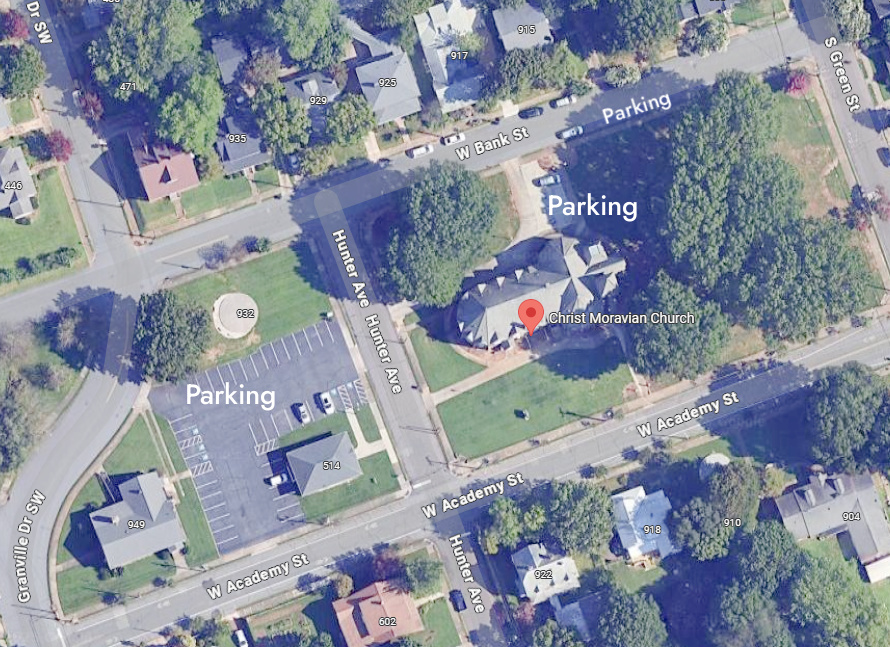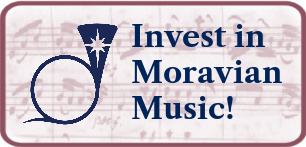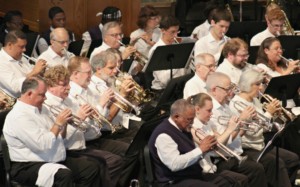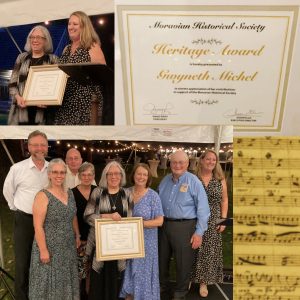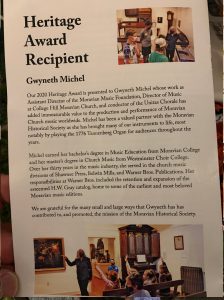
Frequently Asked Questions
~ ~ ~
Moravians and Moravian Music
The Moravian Church is one of the oldest protestant denominations, with roots to 1457 and the followers of Jan Hus in Bohemia. The Hussite movement quickly spread, with the Unitas Fratrum (Czech: Jednota bratrská) established in 1457, but was later forced into exile by the Roman Catholics. In the early 18th century, refugees established a settlement on the estate of Count Nicholas von Zinzendorf signifying the renewed Moravian Church. The Church today has named Jesus Christ as Chief Elder and led the mission movement throughout the world. Moravian congregations observe the convention of the lovefeast, originally started in 1727. It is now a mainline protestant and liturgical denomination, with colleges, universities and theological seminaries. Brass music, congregational singing and choral music continue to be very important in Moravian congregations. In addition, in most older congregations, Moravians are buried in a traditional God’s Acre, by the choir system, with identical flat gravestones, signifying their oneness and equality as brothers and sisters in Christ. >”>read more>>
Moravian music includes vocal, choral, and instrumental music, both sacred and secular, originating from (or enjoyed by) Moravian congregations and settlement congregations.
MMF holdings include collections of music, Moravian and non-Moravian, from the sixteenth through the twenty-first centuries, that was composed in North America, several European countries, and beyond.
For the Moravians, music has always been considered a necessity of life, not a cultural veneer. Many Moravian clergy and lay people in the eighteenth century were trained in music by the same composers who influenced Mozart and Haydn; thus they came to the New World fully conversant with the taste and practice of European classicism. Instruments came to America early with the Moravians… >”>Read more>>
The Moravian musical heritage forms a vital link in the history of American music and culture. During the late eighteenth and early nineteenth centuries, the Moravians in America fostered musical activities of high quality and rich diversity, both instrumental and vocal, both in organized worship services and in recreational pursuits. Read More>>
Listing of Influential, Prolific, and/or Enduring Moravian Composers>
Moravian music is alive and vibrant today!
Moravians are creating new anthems, new hymns, new songs for camp, new arrangements for various instruments in worship, new organ preludes, new handbell pieces, and new descants for hymns.
Read More>>
The Moravian Music Foundation wasn’t the beginning of research into Moravian music; that had begun many years before MMF’s founding in 1956. Master’s theses from the 1930’s; WPA-funded research; New York Public Library publications of the string quintets and some anthems by J. F. Peter; and the first 3 Early American Moravian Music Festivals and Seminars preceded the Foundation’s charter. So research into the music composed, copied, collected, and performed by the Moravians in America (and around the world) has been going on for a long time.
And we know a great deal now! We’ve cataloged most of the American Moravian music. Moravian music in many of the European collections is also cataloged and available on RISM. Over 100 doctoral studies have been completed. Books and articles have been published. Over 500 Moravian anthems were published by many different publishers, and over 100 are now in the Moravian Star Anthem Series, and becoming more widely known. Steglein Press continues their Musical Treasures from Moravian Archives series of publications of critical editions.
But Moravian music research is still in its infancy. Here are a few of the things I know we don’t know, relating to individual composers and their works:
- There’s still room for stylistic and analytic studies of music by composer and by location – for instance, compare the music written and performed in Bethlehem, Pennsylvania, from 1780-1790, to the music written and performed in Salem, North Carolina, during the same years. How different was that, too, from the music written and performed in Herrnhut, Germany?
- Who influenced whom? Did the composers active at the same time compare notes, so to speak? What did they learn from each other? For instance, what influence did Herbst’s copying have on his composition – can you trace the influence of the music of a particular composer on the music Herbst himself wrote after copying some music? Did he try new techniques after copying a work by, say, Peter?
- Where did they get the sources for the music they copied? For instance, there’s a set of flute duets which Peter says he copied in Salem in 1790. What was the source from which he copied them?
- What happened to the pieces that we know existed, but that we don’t now have? For instance, where are the 3 concertos for clarinet that Christian Latrobe writes about having composed?
So, friends of Moravian music … If you know of graduate students or scholars seeking research topics, please do them (and us!) a favor … Send them our way, and we’ll work to connect their research interests with a topic no one else has yet studied!
About the Moravian Music Foundation
The Moravian Music Foundation was founded and chartered in North Carolina in 1956, to preserve, study, edit and publish the music retained in the Archives of the Moravian Church in America, Northern and Southern Provinces.
The Moravian Music Foundation preserves, shares and celebrates Moravian musical culture
Yes. Please contact Chris Ogburn at 336-725-0651 in Winston-Salem (chris@moravianmusic.org; or Kyle Johnston at 610-866-3340 in Bethlehem (kyle@moravianmusic.org) to arrange a tour and to view some unique musical treasures.
MMF is a separate 501(c)3 non-profit organization.
Annual operating income is acquired from the following categories:
- 43% of the annual income comes from individual contributors (Moravian and non-Moravian)
- 26% from earnings/gains on investments
- 11% from sales and royalties
- 10% from annual and special grants
- 4% from a yearly allotment of support from Moravian Church congregations in North America.
How do I sign up to receive E-News and Newsletters from MMF?
Answer: Fill out the easy form at the bottom of this page.
history, presented in a logical format.
